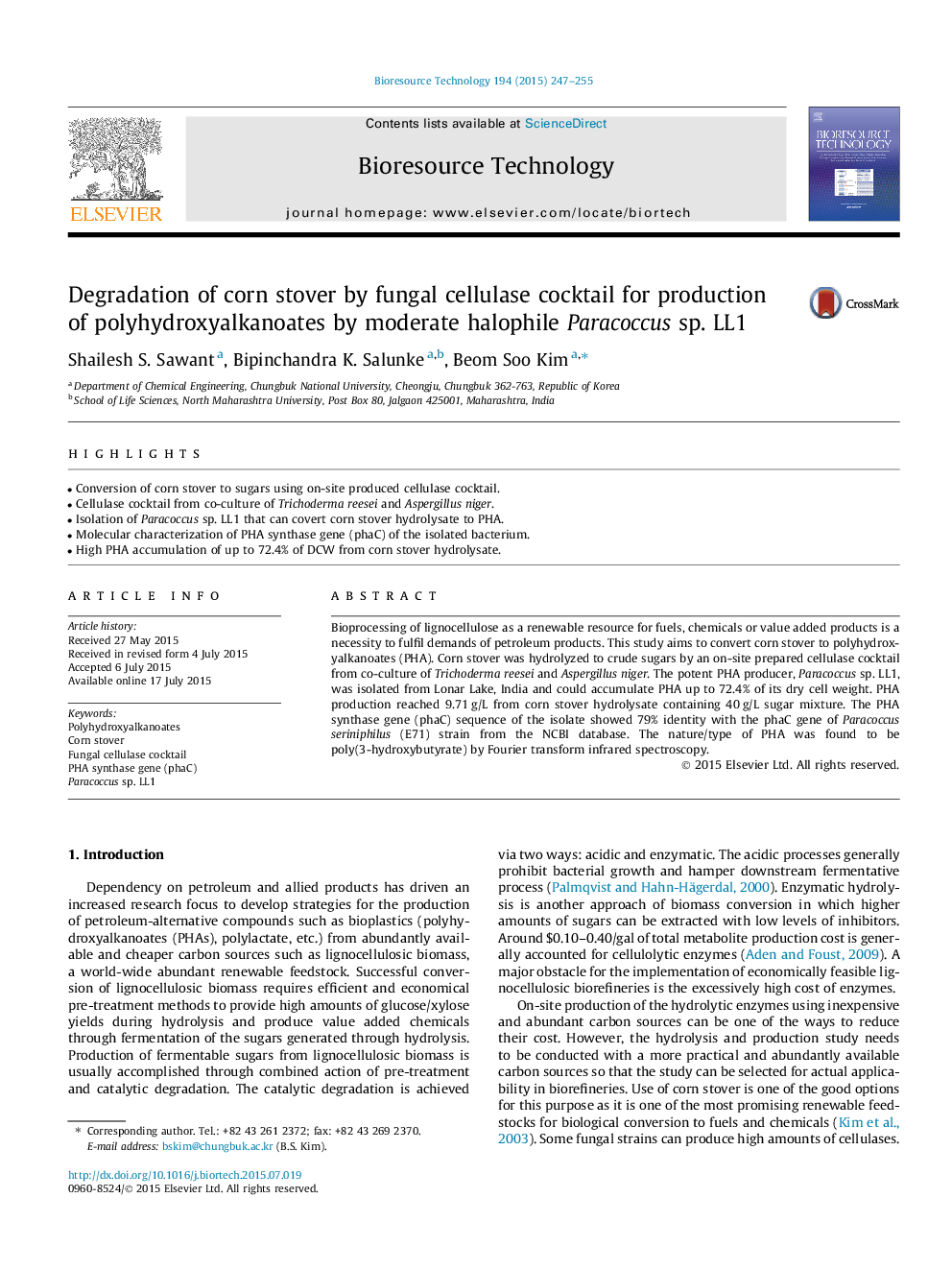| Article ID | Journal | Published Year | Pages | File Type |
|---|---|---|---|---|
| 7073972 | Bioresource Technology | 2015 | 9 Pages |
Abstract
Bioprocessing of lignocellulose as a renewable resource for fuels, chemicals or value added products is a necessity to fulfil demands of petroleum products. This study aims to convert corn stover to polyhydroxyalkanoates (PHA). Corn stover was hydrolyzed to crude sugars by an on-site prepared cellulase cocktail from co-culture of Trichoderma reesei and Aspergillus niger. The potent PHA producer, Paracoccus sp. LL1, was isolated from Lonar Lake, India and could accumulate PHA up to 72.4% of its dry cell weight. PHA production reached 9.71Â g/L from corn stover hydrolysate containing 40Â g/L sugar mixture. The PHA synthase gene (phaC) sequence of the isolate showed 79% identity with the phaC gene of Paracoccus seriniphilus (E71) strain from the NCBI database. The nature/type of PHA was found to be poly(3-hydroxybutyrate) by Fourier transform infrared spectroscopy.
Keywords
Related Topics
Physical Sciences and Engineering
Chemical Engineering
Process Chemistry and Technology
Authors
Shailesh S. Sawant, Bipinchandra K. Salunke, Beom Soo Kim,
